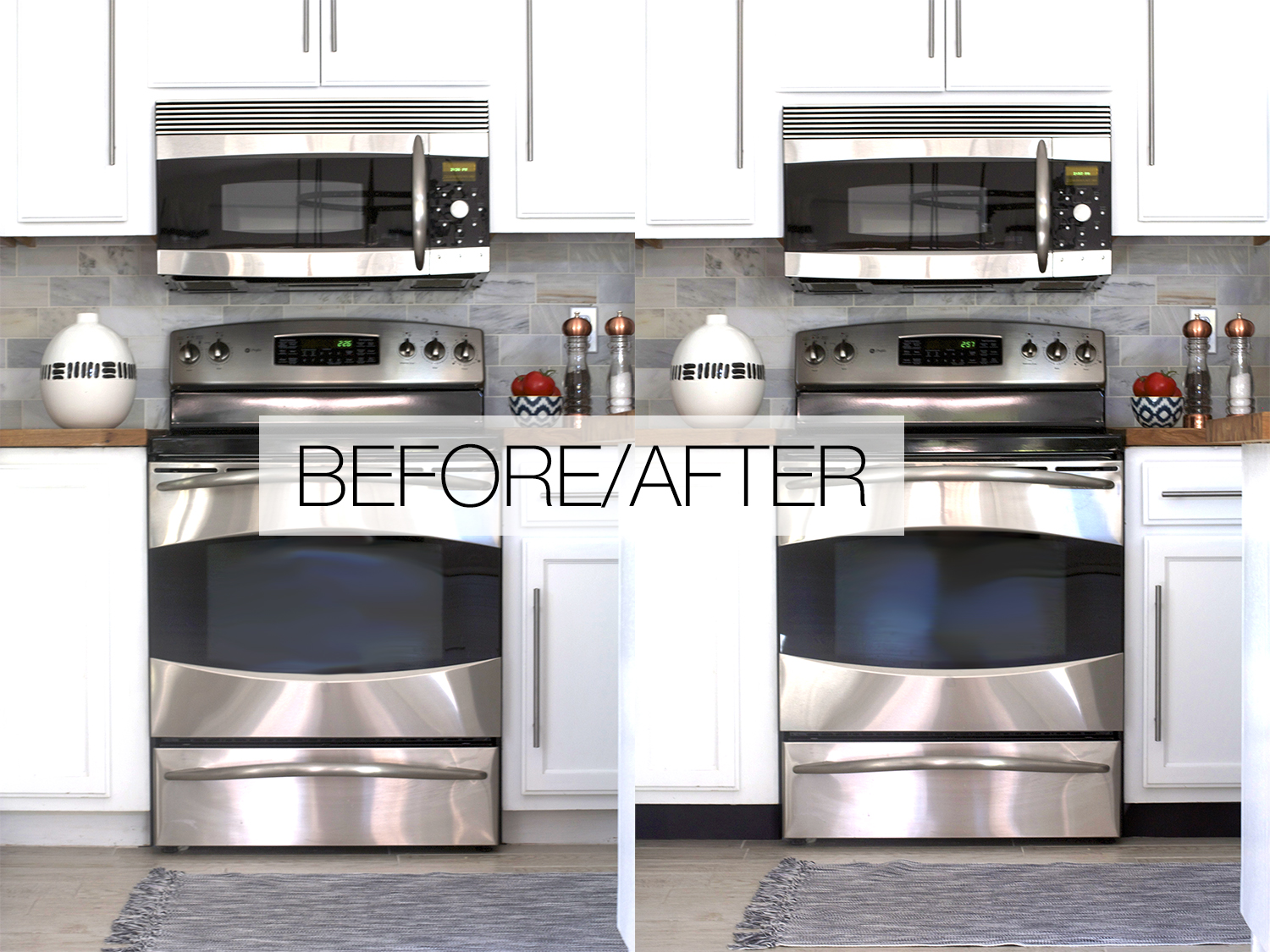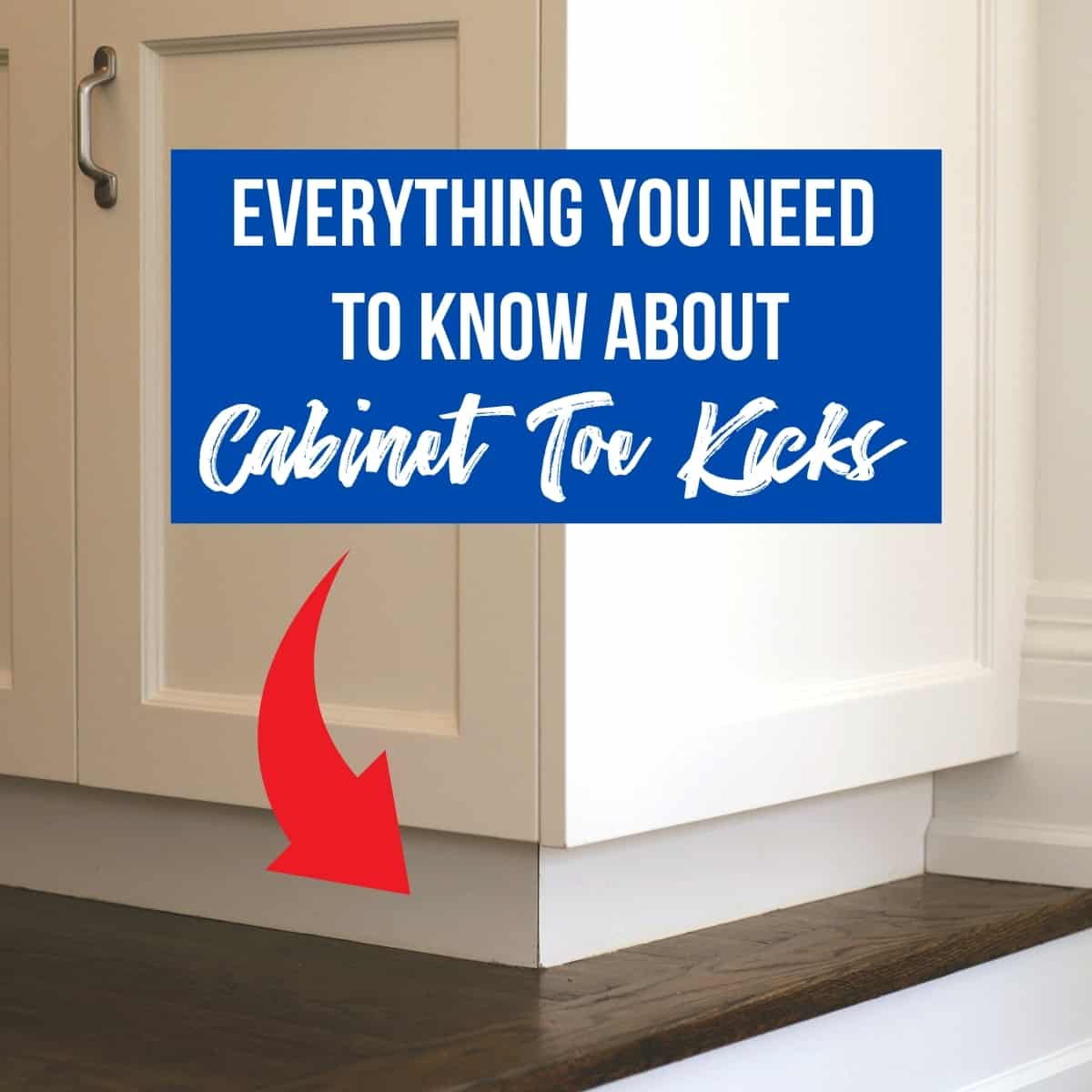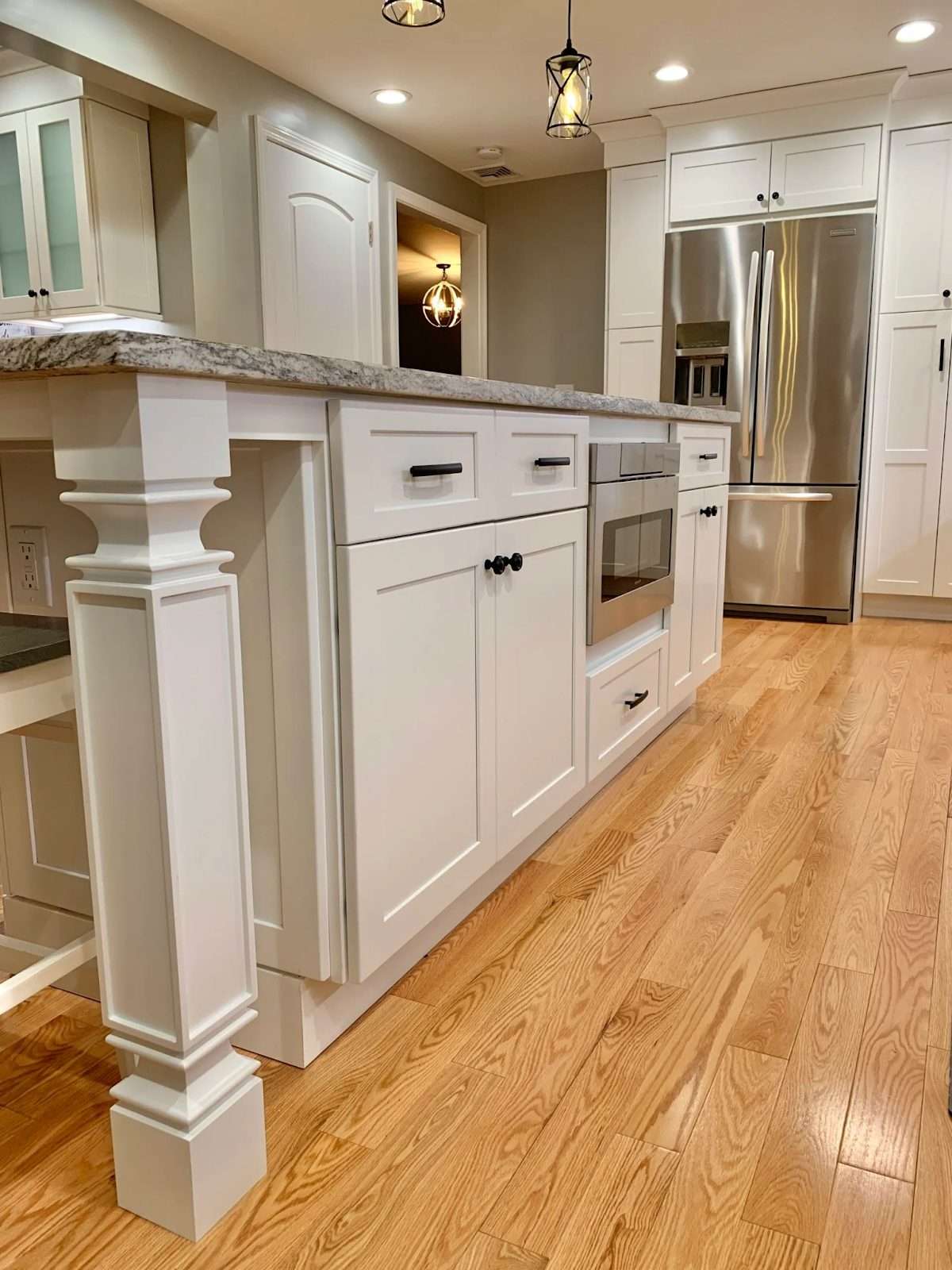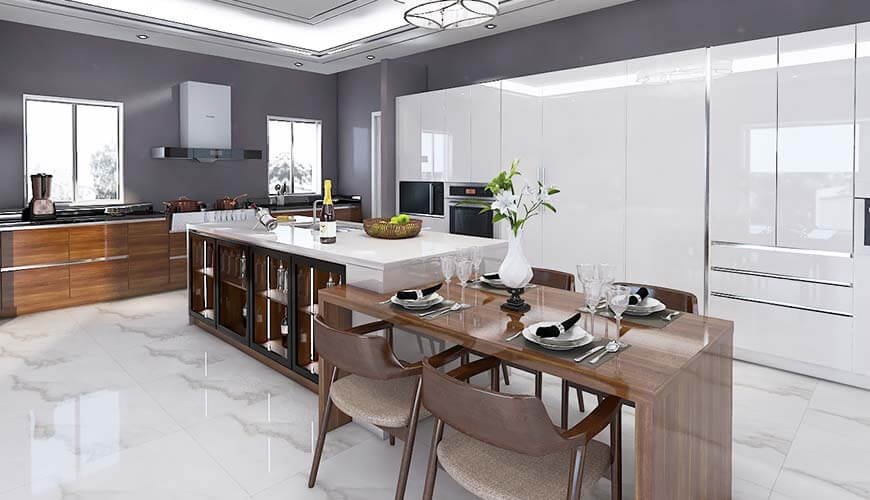Kitchen cabinets have toe kicks to provide ergonomic comfort and to allow users to stand closer to the counter. They also help in preventing tripping hazards.
Toe kicks are recessed areas at the base of kitchen cabinets. These indentations, typically measuring about 3 inches deep and 4 inches high, provide essential foot space for users. This ergonomic design allows individuals to stand closer to the counter without straining their backs.
Toe kicks also enhance safety by preventing users from tripping over cabinet bases. They contribute to a seamless kitchen experience, combining functionality with comfort. By providing a slight recess, toe kicks ensure that kitchen tasks are carried out efficiently and comfortably, making them a crucial element in modern kitchen design.

Table of Contents
ToggleIntroduction To Toe Kicks
Have you ever wondered why kitchen cabinets have that indented space at the bottom? That space is called a toe kick. Toe kicks are a small yet essential part of kitchen cabinets. They serve multiple purposes, making your kitchen experience more comfortable and efficient.
Definition And Purpose
A toe kick is the recessed area at the bottom of a cabinet. It typically measures about 3.5 inches in height and 3 inches in depth. This space allows your feet to fit comfortably beneath the cabinet. Without a toe kick, you would have to lean forward to reach the countertop. This can cause strain on your back and legs.
Toe kicks also provide a cleaner look to your kitchen. They hide the cabinet’s legs and help avoid dust and dirt accumulation. This makes cleaning easier and keeps your kitchen looking tidy.
Historical Background
Toe kicks have been around for many decades. They became popular in the mid-20th century. Before toe kicks, cabinets were built without this recessed area. People found it uncomfortable to work in the kitchen for long hours.
The concept of toe kicks originated from ergonomic studies. These studies showed that people needed more comfort while cooking. Designers then started including toe kicks in cabinet designs. This small change made a big difference in kitchen comfort and efficiency.

Ergonomic Benefits
Kitchen cabinets often feature toe kicks for essential ergonomic benefits. Toe kicks are recessed areas at the base of cabinets. They improve comfort and reduce strain for users. Let’s explore the ergonomic benefits in detail.
Enhanced Comfort
Standing for long periods can cause discomfort. Toe kicks provide a small, recessed space for your feet. This allows you to stand closer to the counter. You can maintain a more natural and relaxed posture. Your body weight distributes evenly, reducing fatigue.
Without toe kicks, you might lean forward awkwardly. This can lead to back and neck pain. Toe kicks enhance comfort by allowing closer access. Tasks like chopping vegetables or washing dishes become less tiring.
Reduced Strain
Toe kicks reduce strain on your lower back and legs. They allow you to stand with your feet directly under your hips. This alignment supports better posture and balance. Your muscles work less to keep you stable.
Daily tasks become easier and less painful. Toe kicks also help prevent accidents and slips. They provide a stable stance, reducing the risk of falls. This is especially beneficial for older adults and those with mobility issues.
Safety Considerations
Safety is a major reason why kitchen cabinets have toe kicks. Toe kicks help create a safer kitchen environment by reducing the risk of accidents and improving stability.
Accident Prevention
Toe kicks reduce the chance of tripping over cabinet bases. They provide a space for your feet, allowing you to stand closer to the counter. This helps prevent awkward bending and reaching. It also reduces the risk of back strain and other injuries.
Standing closer to the counter also helps prevent spills. You are less likely to knock over items or spill liquids. This keeps your kitchen cleaner and safer.
Improved Stability
Toe kicks contribute to the stability of kitchen cabinets. They provide a solid base that keeps the cabinets in place. This is especially important for heavy cabinets that hold many items.
A stable base ensures the cabinets do not tip over. This prevents potential injuries and damage to your kitchen. A stable cabinet also maintains the integrity of your kitchen layout.
Toe kicks are an essential feature for both safety and stability in the kitchen.
Maximizing Space
Kitchen cabinets are designed with toe kicks for a good reason. These small recesses at the bottom of cabinets help in maximizing space. Toe kicks make kitchen tasks more comfortable and efficient. Here, we explore how toe kicks optimize foot space and ensure seamless movement in your kitchen.
Optimized Foot Space
Toe kicks provide an extra few inches of room for your feet. This extra space allows you to stand closer to the countertop. Standing closer to the countertop reduces strain on your back and arms. It makes reaching for items easier and safer.
Imagine trying to chop vegetables without a toe kick. You would need to stand further back. This could lead to awkward postures and potential injuries. Toe kicks help you maintain a more natural stance. This is essential for long cooking sessions.
Seamless Movement
Toe kicks also ensure seamless movement in the kitchen. The recessed space allows your feet to move freely. This is especially useful when you have multiple tasks to handle. You can move swiftly from one area to another without tripping.
Consider a busy kitchen with lots of foot traffic. Toe kicks prevent accidents by giving your feet room to maneuver. This keeps the kitchen safe and efficient. It also helps in maintaining a clean and organized space.
Design And Aesthetics
Kitchen cabinets serve more than just storage purposes. They also enhance the overall design and aesthetics of your kitchen. A crucial component that often goes unnoticed is the toe kick. This small recessed space at the bottom of cabinets significantly impacts the kitchen’s visual appeal and functionality.
Visual Appeal
Toe kicks can make your kitchen look sleek and modern. They provide a clean line between the floor and the cabinets. This design element helps your kitchen look more organized and tidy. The toe kick’s color often matches the cabinets, creating a seamless appearance. Without toe kicks, cabinets might look bulky and less refined.
Integration With Cabinet Design
Toe kicks are integrated seamlessly into the cabinet design. They allow the cabinets to stand out without obstructing foot space. This integration ensures that the cabinets look like a cohesive unit. It also gives the kitchen a polished and professional look. Toe kicks can be customized to match the overall theme of your kitchen. They can be simple, ornate, or even include hidden storage options.
| Feature | Benefit |
|---|---|
| Color Matching | Creates a seamless appearance |
| Customizable | Matches the kitchen theme |
| Integrated Design | Provides a polished look |
Overall, toe kicks are essential for both design and aesthetics. They enhance the visual appeal and integrate perfectly with the cabinet design.
Material Choices
Choosing the right material for toe kicks is crucial. It ensures durability and complements the kitchen design. Let’s explore some popular material options for toe kicks.
Durable Options
Toe kicks endure daily wear and tear. Durable materials are essential. Here are some long-lasting choices:
- Stainless Steel: Resists rust and stains. Ideal for modern kitchens.
- Wood: Timeless and sturdy. Fits well with classic designs.
- PVC: Waterproof and easy to clean. Perfect for busy households.
Customizable Features
Customization allows toe kicks to match your kitchen’s style. Consider these features:
- Color Matching: Coordinate toe kicks with cabinet color.
- Height Adjustment: Adjust to suit your comfort and kitchen layout.
- Textured Finishes: Add a unique touch with various textures.
| Material | Durability | Customization |
|---|---|---|
| Stainless Steel | High | Limited |
| Wood | Moderate | High |
| PVC | High | Moderate |
Maintenance And Cleaning
Keeping your kitchen clean and well-maintained is essential. One often-overlooked feature of kitchen cabinets is the toe kick. This small recess at the bottom of cabinets makes a significant difference in maintenance and cleaning. Let’s dive into how toe kicks simplify these tasks.
Ease Of Cleaning
Toe kicks create a recess that catches crumbs and spills. This makes sweeping easier. Without a toe kick, debris would settle at the cabinet base. This would require more effort to clean.
When mopping, toe kicks prevent water from damaging the cabinets. They also keep the cleaning process quick and efficient.
Here’s a simple comparison:
| With Toe Kicks | Without Toe Kicks |
|---|---|
| Easy to sweep and mop. | Debris collects at cabinet base. |
| Protects cabinet edges from water. | Water can damage cabinet edges. |
Longevity And Upkeep
Toe kicks enhance the longevity of kitchen cabinets. They protect the bottom edges from wear and tear. This reduces the risk of damage over time.
Regular cleaning is easier with toe kicks. This promotes a longer lifespan for your cabinets.
Key benefits include:
- Prevents moisture damage
- Reduces scuff marks
- Minimizes wear on cabinet edges
Toe kicks are not just a design element. They play a crucial role in maintaining your kitchen’s cleanliness and durability.

Innovative Alternatives
Traditional kitchen cabinets often feature toe kicks for ergonomic purposes. But, innovative alternatives are now available. These alternatives offer both style and functionality. Let’s explore some of these cutting-edge options.
Modern Design Trends
Modern kitchens embrace sleek and clean lines. Toe kicks can disrupt this look. Designers are finding new ways to achieve a streamlined appearance. Here are some modern trends:
- Floating Cabinets: These cabinets are mounted on walls. They create a floating effect and eliminate the need for toe kicks.
- Integrated Lighting: LED lights can be installed under cabinets. This feature adds both style and visibility.
- Custom Baseboards: Custom baseboards can match or contrast with cabinets. They provide a unique design element while hiding the toe kick area.
Future Of Cabinet Design
Advancements in technology are shaping the future of cabinet design. These innovations aim to enhance both aesthetics and functionality. Below are some exciting developments:
| Feature | Description |
|---|---|
| Smart Cabinets | Cabinets equipped with sensors and smart technology. They offer automated opening and closing. |
| Modular Systems | These systems allow for customization and reconfiguration. They adapt to changing needs and styles. |
| Eco-Friendly Materials | Materials such as bamboo and recycled wood. They provide sustainable and durable options. |
These innovations signal a shift in kitchen design. The focus is on creating spaces that are both beautiful and practical. As design trends evolve, we can expect even more exciting alternatives to traditional toe kicks.
Frequently Asked Questions
What Is A Toe Kick In Cabinets?
A toe kick is the recessed area at the bottom of kitchen cabinets for foot space.
Why Do Cabinets Need Toe Kicks?
Toe kicks provide ergonomic comfort by allowing closer access to the countertop and workspace.
Are Toe Kicks Necessary For Kitchen Cabinets?
Yes, toe kicks enhance comfort and prevent strain while working in the kitchen.
How Deep Should A Toe Kick Be?
A typical toe kick is about 3. 5 inches deep, offering ample foot space.
What Is The Standard Height Of A Toe Kick?
The standard toe kick height is 3. 5 inches, balancing ergonomics and cabinet design.
Can Toe Kicks Be Customized?
Yes, toe kicks can be customized to match the kitchen’s style and user preferences.
Do Toe Kicks Affect Cabinet Stability?
No, toe kicks do not compromise cabinet stability; they are an integral part of the design.
Are Toe Kicks Aesthetically Pleasing?
Toe kicks can be designed to blend seamlessly with the cabinet finish, enhancing aesthetics.
How To Clean Kitchen Cabinet Toe Kicks?
Regularly wipe toe kicks with a damp cloth to remove dust and spills.
Do All Kitchen Cabinets Have Toe Kicks?
Most modern kitchen cabinets include toe kicks for ergonomic and functional benefits.
Conclusion
Toe kicks in kitchen cabinets provide comfort, functionality, and safety. They prevent strain by allowing closer access to countertops. Toe kicks also hide imperfections and offer a sleek design. Understanding their importance can enhance your kitchen’s efficiency and aesthetic. Consider toe kicks for your next kitchen remodel to maximize benefits.


